Ocotillo (Fouquieria splendens) is a vase shaped cactus like plant with spiny canes that are covered with small green leaves typically after substantial rains and have a reddish orange tubular shaped flower at the tips in Spring. But most of the time, they are deciduous and look like a clump of thorny dead branches. Sedona native Ocotillos are also found in the lower deserts and into Mexico.
When I first moved up to Sedona from the Phoenix area, I was surprised to see Ocotillos growing among the pines and junipers. At an elevation between 4200-4600 feet Sedona is probably at the upper level of its range. When in bloom – and when I say bloom, I mean the leafing out period where the green leaves cover the canes, they are striking sculptural features that add an unusual accent to any landscape where you want a bit of a desert flair. Ocotillo is often said to “bloom” due to its on and off leafing out cycles due to the amount of rain. However, some Ocotillos hold their leaves for longer periods between seasonal rains. Otherwise, they take on their deciduous persona which is not the Ocotillo that most clients are looking for when they request a Sedona native Ocotillo in their garden.
Sedona Native Ocotillos
But being patient is what we can learn from them
As a landscape designer and contractor, I am reluctant to suggest the idea of Ocotillos in a design for a few reasons. One of which was recently articulated in an article by the Backyard Gardener, Jeff Schlau of the Arizona Cooperative Extension Yavapai County titled, Native Ocotillos Require Patience.
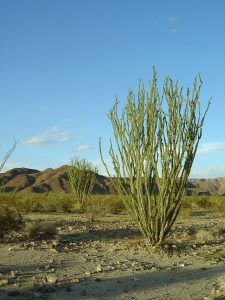
Ocotillo is known for its upright slender spiny canes covered with small green leaves.
Most people expect their Ocotillos to look just like the picture, but that’s not what they look like when you buy them at the nursery. Most all Ocotillos are harvested bare root from their native habitat, wrapped tight with wire for easy transport and handling. The roots are severely cut to sometimes to the point where there is not much to go into the planting hole and you wonder what is going to keep it from falling over. The process of taking a native plant from its habitat and putting it into your garden is considered transplanting Ocotillos and what Mr. Schlau is referring to as “patience required” is that some Ocotillos can take anywhere between 6 to 24 months before any signs of blooming or leafing out. Presumably because of the severe root pruning during harvesting from the desert.
I tell clients who are interested in Ocotillos that they will be planted bare root and will not have any leaves. I then tell them it could take years to look like what they expect. I also say they are unpredictable as to when they will leaf out and to be able to appreciate them in their deciduous state because that is what they will look like most of the time. I have had countless former clients complain that their “Ocotillo is dead” or “When is it going to leaf out?” I tell them to scratch a branch with a knife and if its a pale green, that its still alive and to be patient. The problem is, I am the guy with the great idea to plant the Ocotillo which is constantly under performing expectations and makes me look not so cool.
The point of this blog post is to forewarn anyone considering planting Ocotillos in their yard. Not that they should be avoided but to fully understand why they may not meet your expectations. Ocotillos are great specimens that symbolize the southwest and provide a sculptural element that provides instant vertical height and looks great when lit at night. The otherwise brown deciduous state should be considered as the predominant look most of the year.
Many a garden writer who delves into the more deeper aspects of gardening will tell you gardens can teach you about yourself. Those inner aspects of your being are often reflected in the garden if you pay close attention . Patience is a virtue that can be learned through gardening. The Ocotillo is a wonderful teacher to instill patience. Sometimes it is more enjoyable to one day notice the buds on your Azalea that hasn’t bloomed for three years than to come home to a bountiful display of riotous color in your container garden every day.
There is a common request I get from landscape clients: they want low maintenance, lots of color and don’t want to spend very much – and they want it now, not have to wait three years for everything to look great. Usually after I get a little introspective talking about patience, being in the present moment, allowing things to be as they are, people come back down to earth.
Yes, Sedona native Ocotillos do inhabit our surrounding national forest and is perhaps the best way to appreciate their beauty and elegance. Walking in silence, being at one with nature, not thinking about anything in particular, and then as you come to the top of a crest, you are greeted by an Ocotillo in full bloom as if it was waiting for you.
If you do buy a bare root Ocotillo on your own, check out this publication from the Phoenix Botanical Garden.
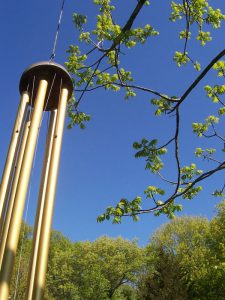

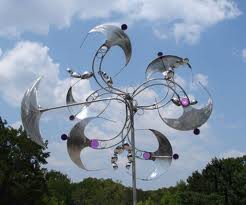 Kinetic sculpture is another way to reflect air as a classical element in the garden with the design principle of movement being the key. Without the wind, these sculptures become static and stoic always waiting for that little breeze to make them come alive with the spirit of the wind.
Kinetic sculpture is another way to reflect air as a classical element in the garden with the design principle of movement being the key. Without the wind, these sculptures become static and stoic always waiting for that little breeze to make them come alive with the spirit of the wind.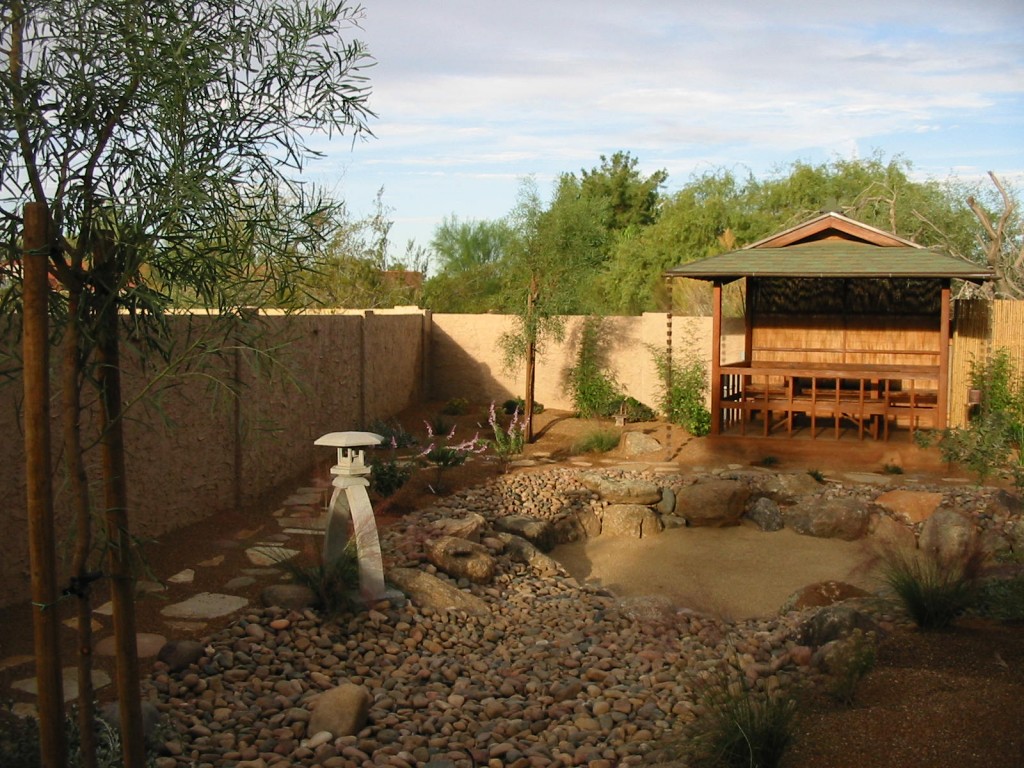
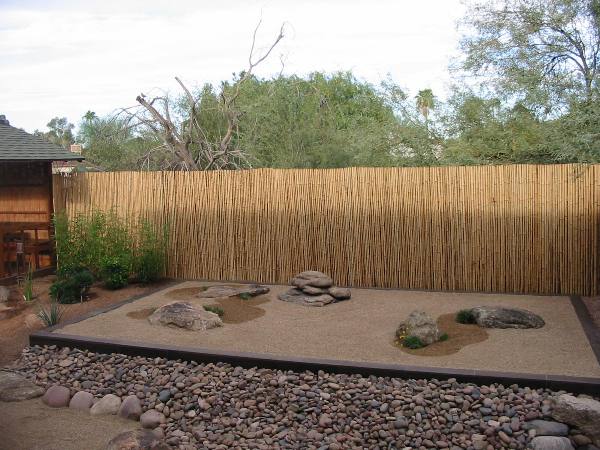
 Many homeowners are simply unaware of what constitutes “contracting” as it is defined by the Arizona Registrar of Contractors who is the state licensing agency. Anything over $1000 requires that the person with whom a homeowner engages to do work is a duly licensed contractor. Having a license is not an optional way of doing business yet it may seem that way when local classified ads end with the phrase “not a licensed contractor” as if they elected not to get a license. Homeowners also group anyone who does remodeling, building or construction as contractors whether they are licensed or not. However, the Arizona Registrar of Contractors does not refer to such people as contractors as that implies they are licensed. They are referred to as “unlicensed entities”. Referring to them as contractors gives them a form of legitimacy. Just as the classified ad phrase “not a licensed contractor” claims they are a contractor, just not a licensed one. Thus you may have seen the bumper sticker issued by the Arizona Registrar of Contractors to all contractors who just obtained a new license “Licensed Contractors Build Trust”.
Many homeowners are simply unaware of what constitutes “contracting” as it is defined by the Arizona Registrar of Contractors who is the state licensing agency. Anything over $1000 requires that the person with whom a homeowner engages to do work is a duly licensed contractor. Having a license is not an optional way of doing business yet it may seem that way when local classified ads end with the phrase “not a licensed contractor” as if they elected not to get a license. Homeowners also group anyone who does remodeling, building or construction as contractors whether they are licensed or not. However, the Arizona Registrar of Contractors does not refer to such people as contractors as that implies they are licensed. They are referred to as “unlicensed entities”. Referring to them as contractors gives them a form of legitimacy. Just as the classified ad phrase “not a licensed contractor” claims they are a contractor, just not a licensed one. Thus you may have seen the bumper sticker issued by the Arizona Registrar of Contractors to all contractors who just obtained a new license “Licensed Contractors Build Trust”.



